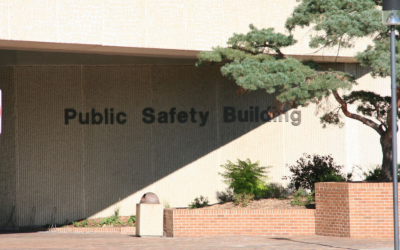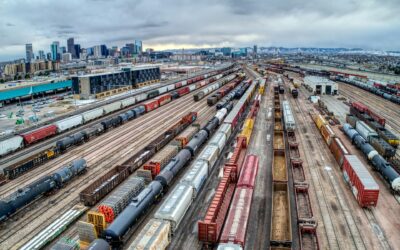
In California, public officials are pursuing well-funded initiatives to improve ferry operations along the Pacific Coast. Recently, the city of Berkeley and California’s Water Emergency Transportation Authority (WETA) completed a joint feasibility study related to local ferry services. The study examined a $93 million project with the objective of building out new pier and ferry facilities in Berkeley. The project is moving into the design and permitting stages, and solicitation documents will soon be on the street.
Nearby, WETA is partnering with the port of San Francisco and other local agencies to carry out work on the joint Mission Bay Ferry Landing project. The first phase of this project included marine clean-up work, which is now completed. The second phase carries a budget of $58.8 million for design and construction work.
New York City’s Department of Transportation (NYCDOT) owns and operates the Staten Island Ferry and interacts with other city agencies and private ferry operators to promote use of the waterways for transportation. The upcoming opportunities in the New York area that are related to ferry services focus on the bicoastal need to improve ferry services. State officials have allocated $433 million for projects that include reconstruction, new construction, and upgrades for ferry services. From that initial pool of funding, the state has earmarked $88 million to build out new ferry vessels over the course of 2022. NYCDOT staff hope to put that plan in motion with an April 2022 solicitation for the estimated $24 million project.
NYCDOT also expects to issue a request for qualifications (RFQ) soon for construction partners for a Staten Island Ferry Facility Flood Protection project. Then, based on responses, the agency will issue a request for proposals (RFP) to a shortlist of bidders.
New Jersey’s Office of Maritime Resources has plans to improve its ferry infrastructure. In March, the agency is expected to advertise an RFP for work related to its South Amboy Ferry Terminal. The scope of the project warrants a budget in the $1 million to $5 million range. The funds will be used for a project that includes dredging efforts in Middlesex County.
The Casco Bay Island Transit District (CBITD), which operates ferry routes from Portland, Maine, will solicit assistance from the private sector to improve its regional services. With initial funding from the state’s most recent budget, the CBITD will oversee projects which include a new ferry boat. Specifically, transit officials will use $10 million to contract work on a new $10 million vessel through 2023. During this same timeframe, an additional $3 million allocation from the state will allow the CBITD to rehabilitate the pier and substructure for basing its ferry fleet.
In 2021, Skagit County, Washington, approved a 14-year ferry capital improvement plan that will usher in new opportunities for potential private-sector partners. The county has programmed $13.6 million to construct a new ferry vessel for its regional fleet and anticipates opening the project for bidding. The project’s solicitation schedule will coincide with that of its $6 million project to electrify the ferry’s shore-side infrastructure and terminal facilities.
The state of Washington is a reliable source for ferry service opportunities, including at Washington State Ferries (WSF) where the agency will seek private partners to help electrify the state’s ferry vessels. The initial phase of the System Electrification Plan will convert the first of three large ferries from diesel to electric. This phase, which is currently in the planning stage, has already been approved for $35 million in funding from the federal Volkswagen settlement. Construction on the first ferry is scheduled to begin in winter 2022 and will last until 2025 when it becomes operational. Another opportunity tied to WSF involves a widely scoped project to rehabilitate West Seattle’s aged Fauntleroy Ferry Terminal. Efforts to seismically retrofit and upgrade the 1950s-era terminal are in the pre-construction/planning phase. The $93 million budget attached to the plans will cover a 2023 environmental review and its subsequent design and construction phases.
In Annapolis, Maryland, the city’s plan for more electric transportation options has presented numerous opportunities. Using over $200,000 in capital funding between late 2022 and 2023, the city will make a down payment on an electric ferry and begin planning and design for the ferry’s electric charging infrastructure. City officials are considering procurement options for the ferry itself, which would likely require an 18-month delivery period. Meanwhile, as planning and design work on the charging infrastructure concludes in 2023, additional funding will be sought and the work will then open for more solicitations.
Even in Texas, significant funding is being set aside to improve local ferry services. The Corpus Christi District’s unified transportation plan for 2022 is committing $60 million toward ferry infrastructure. That funding will rehabilitate and expand facilities along the Port Aransas Ferry’s network of landings. In addition, Texas’ biennial budget for 2022 to 2023 allocates $50 million for ferry services in 2022 and another $50 million in 2023. Those appropriations are over and above what Texas will receive from the federal government’s infrastructure bill.
These opportunities represent the immediate future of ferry related opportunities. Beyond this horizon, $1 billion of the federal government’s infrastructure investment over the next five years will be available for projects that create facilities and vessels for “essential ferry services for rural areas.” Ferry operations will be improved and become significantly greener beginning immediately and continuing for the next five years. It’s a great time to become more familiar with ferry operations in America.







